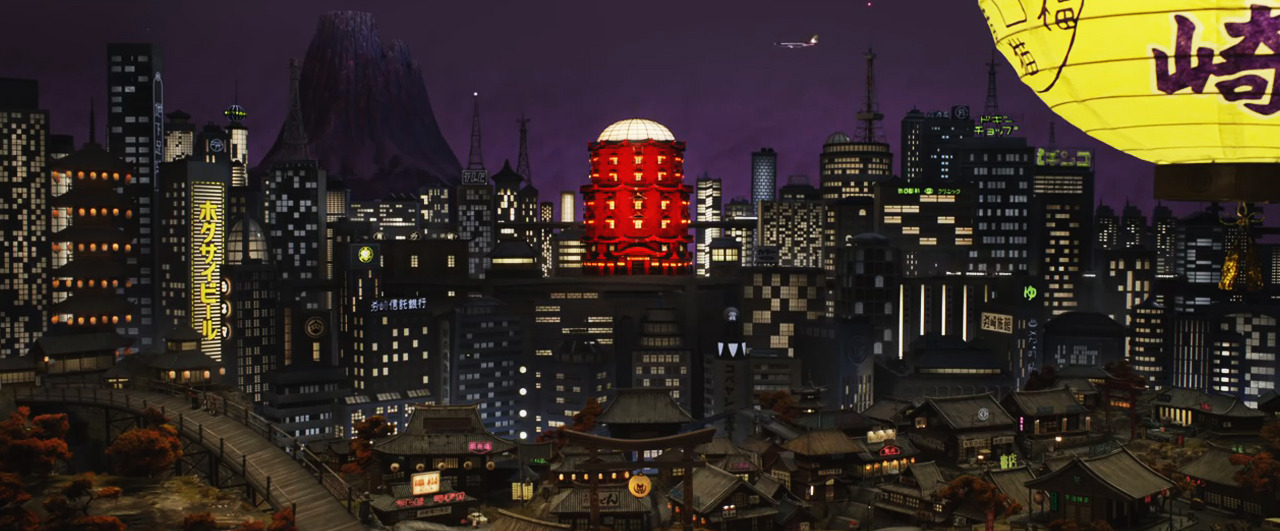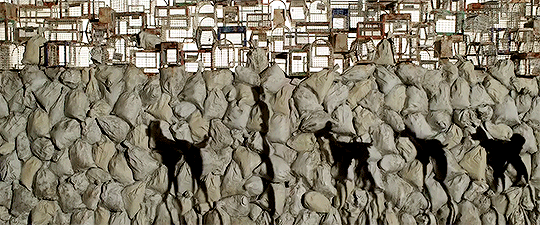Momotarō is a peach boy in Japanese folk lore – a hero who had been born from fruit. In the story, he travels to Onigashima, the isle of demons, and defeats monsters with his newly acquired animal friends, obtaining treasure for his family. These parallels are seen in Inugashima, or Isle of Dogs, where Wes Anderson crafts his newest endeavor around a Japanese setting. When a dog flu sweeps through Megasaki City, the mayor Kobayashi exiles all dogs to Trash Island, exercising his authoritarian political precision with sinister intent. But Atari, his nephew, is determined on finding his bodyguard dog Spots.

For many reasons, Isle of Dogs is spectacular and clever. It bangs into its self-assured display like a firework – having the same amount of subtlety and persuasion as a firecracker, but similarly lacking as it dissolves too quickly and leaves a measurably less remarkable post-impression. It is undeniably fantastic, but there is something missing from all the razzle-dazzle.
The production is beautiful, one-of-a-kind. And even without the slick graphics of computer CGI, there’s a exactness in the stop-motion animation, detailed in scenes where a sushi chef prepares a lunch, or when Tracy recites the facts on the actors of her conspiracy theory, shining a flashlight on an elaborate tangle of clippings and string. At a technical standpoint, the film is incredible, made with 240 sets and hundreds of models, scenes constructed with a visionary lens to turn plastic sheets and cotton wool into interesting landscapes. From untranslated easter eggs printed on the overhead trolley to numerous references to Kurosawa, the visuals are refined. The colour schemes are beautiful. Not a strand of fur is out of place.

On the other hand, the film sometimes borders on using Japan like a mood board, as purely an aesthetic, swinging back and forth between succeeding and failing its original intention of being a cultural homage. It’s an interesting choice to have no subtitles for any of the dialogue given in Japanese, dialogue that is given by well-known stars such as Ken Watanabe and Yojiro Noda. It gives us the dogs’ perspectives and uses mistranslations as a plot device, but this can be hairy in certain aspects, especially when a character like Tracy emerges from this kind of language choice.

Nevertheless it’s an idiosyncratic plot, emerging from the surfeit of adaptions and remakes to tell us a story centered on man’s best friend with a weird but irresistible kind of charm in the folds of the writing. Isle of Dogs is ambitious in many ways, and in others, it’s all bark but no bite. It’s crafty in its humour, often deadpan and sometimes near ridiculous. The dialogue is well-timed and funny. And for a film about cute dogs, there’s a grittiness to it, never shying away from graphic themes or its political undertones.

But while there’s certainly a lot of good bois in Isle of Dogs, it’s difficult to form a relationship between the viewer and the number of characters the film introduces. We learn a lot about Atari, Spots, and Chief, but it doesn’t leave much room for the growth of all the other characters, including our main band of dogs. With such a hefty, vibrant plot, the screen time of under two hours ends up becoming a limiting reagent, not allowing the story to glow to its full potential.

In the end, Isle of Dogs is fantastic and it is fun to watch, but it lacks a certain depth – a certain howl – to its puppy snap.
Currently playing at State Theatre and elsewhere! Student tickets are $8.


